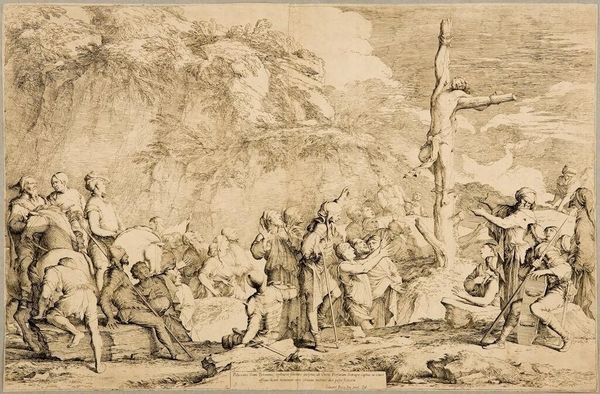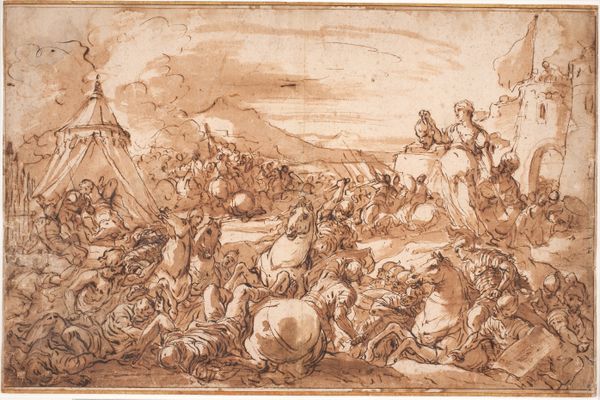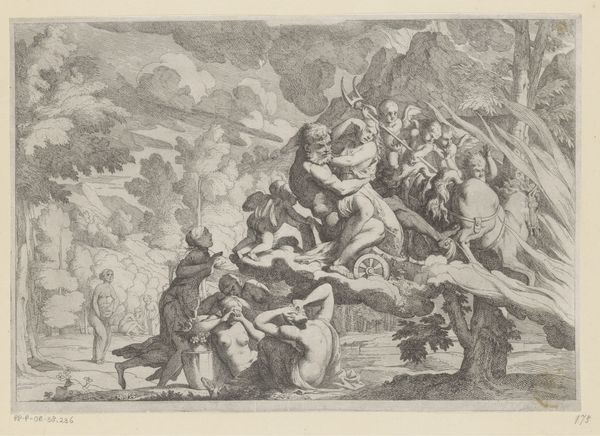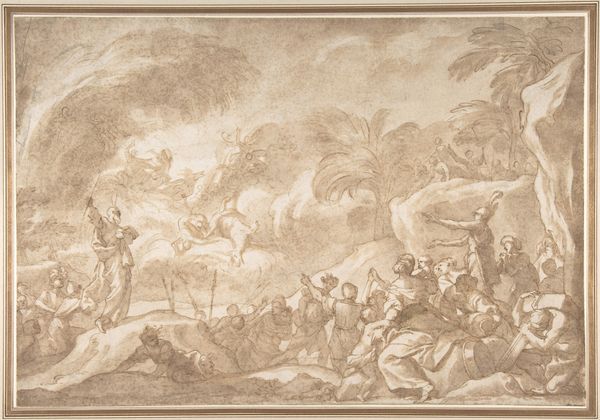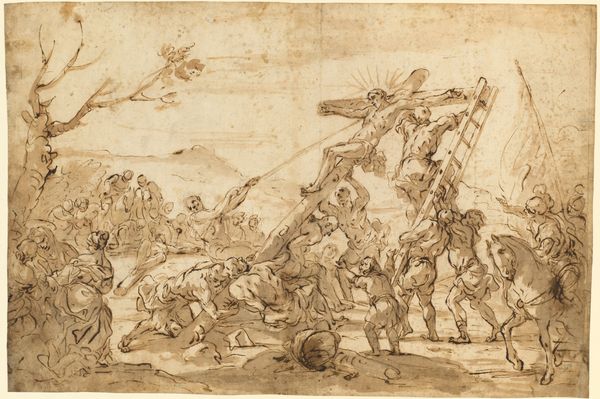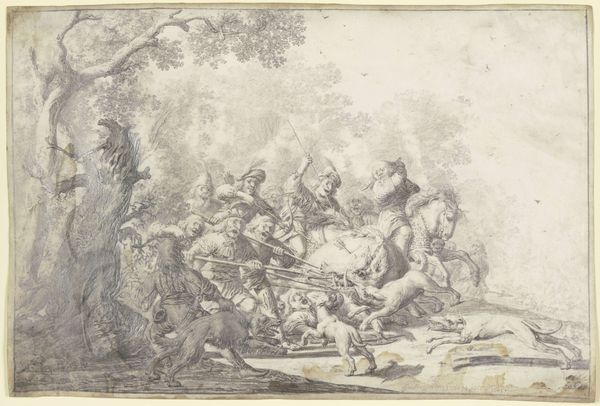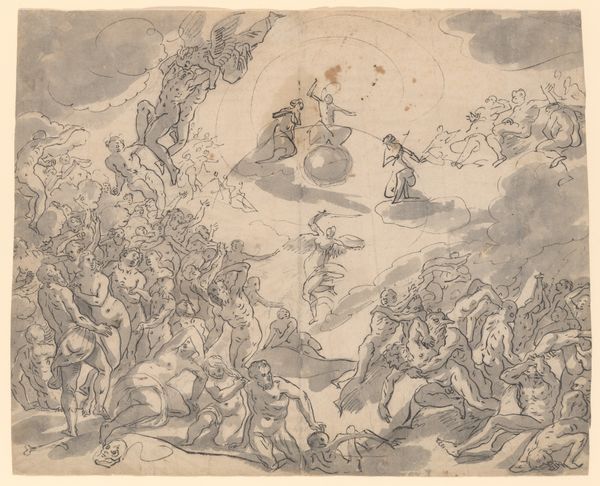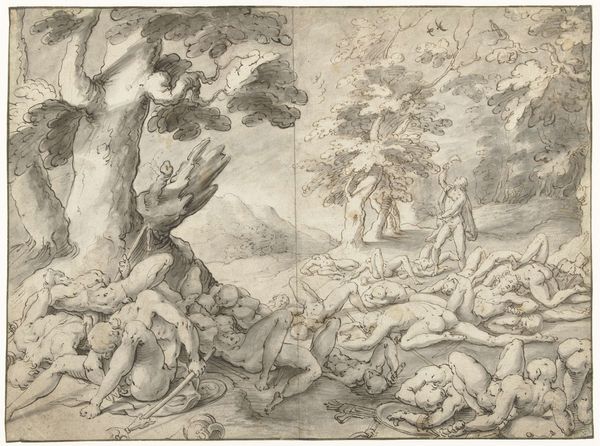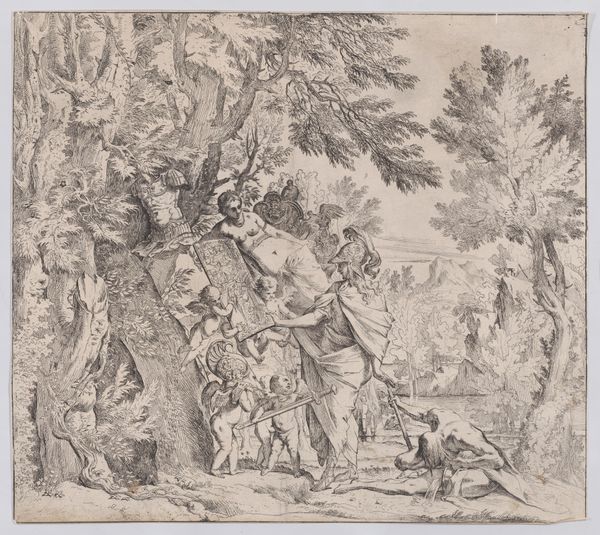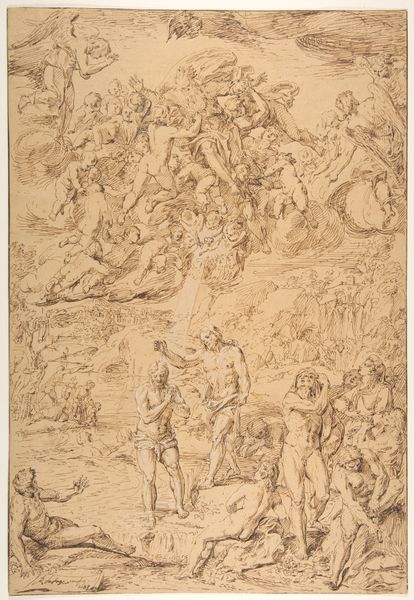
The crucifixion of Polycrates the tyrant after his capture by the Persians 1657 - 1667
0:00
0:00
drawing, print, ink
#
drawing
#
ink drawing
#
narrative-art
#
baroque
# print
#
landscape
#
figuration
#
ink
#
crucifixion
#
history-painting
Dimensions: sheet: 22 1/2 x 30 3/8 in. (57.1 x 77.1 cm) plate: 18 5/8 x 28 7/16 in. (47.3 x 72.2 cm)
Copyright: Public Domain
Salvator Rosa etched this print of "The Crucifixion of Polycrates" in the mid-seventeenth century. Rosa stages the scene of a tyrant's execution as high drama, drawing on classical history to reflect on power, justice, and retribution. Rosa was working in Naples, which at the time was under Spanish rule and experiencing social unrest. The image creates meaning through the implied contrast between the absolute power of the Persians and the fate of Polycrates. Rosa possibly drew parallels to contemporary political situations. In seventeenth-century Europe, debates about the nature of monarchy, tyranny, and justice were central to political thought. Artists were commissioned to create allegorical paintings which often referenced classical subjects, such as this one, to comment on the state and the right use of power. To truly understand a work like this, we can consider the context in which it was made. Looking at political pamphlets, literature, and even popular songs of the time, all help to open the way for more nuanced interpretations.
Comments
No comments
Be the first to comment and join the conversation on the ultimate creative platform.
